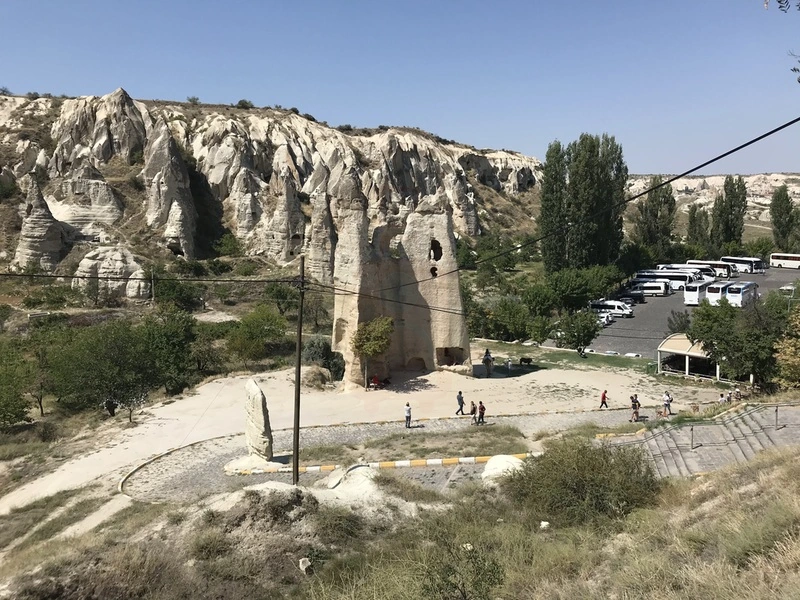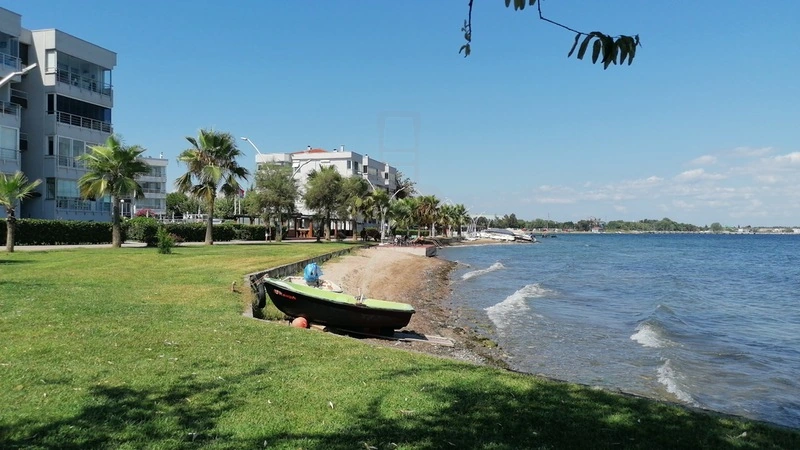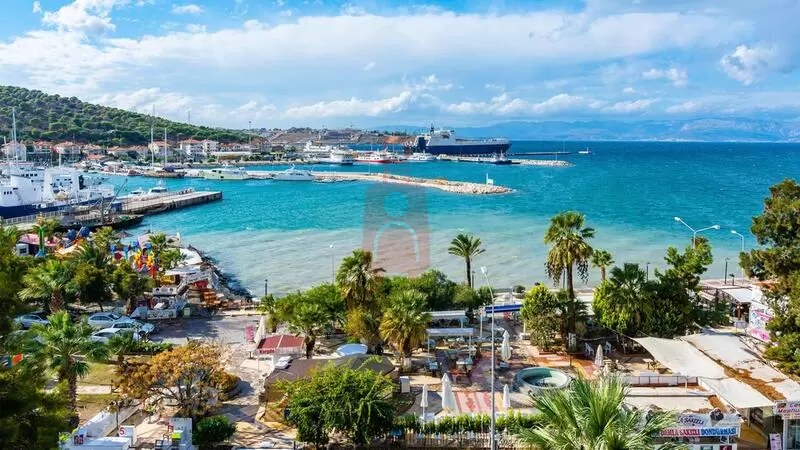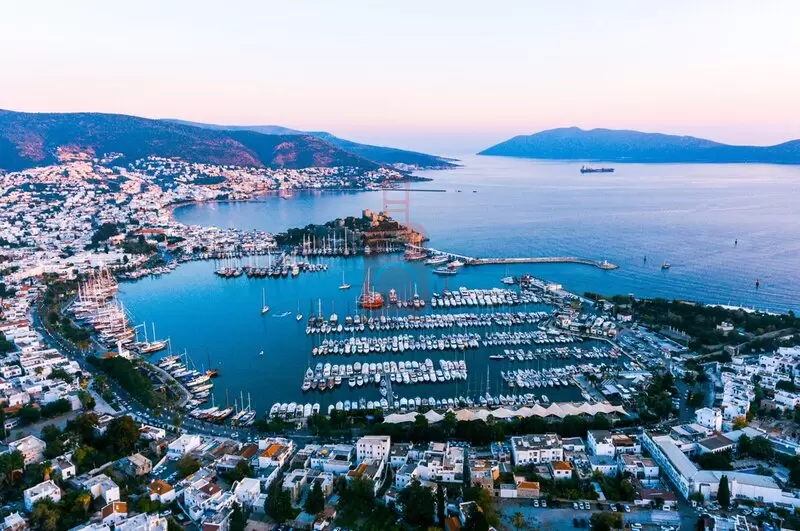
Istanbul, the magnificent city that straddles two continents, is one of the worlds most culturally rich and visually stunning destinations. Known as the meeting point of East and West, Istanbul is a city that boasts a unique blend of ancient history, vibrant culture, and mesmerizing natural beauty. From grandiose mosques and palaces to bustling bazaars and serene waterfronts, Istanbul offers something for every traveler. Here is a guide to the most beautiful places in Istanbul, where you can experience the best of the citys history, architecture, and natural wonders.
Hagia Sophia
One of the most iconic landmarks in Istanbul, Hagia Sophia is a masterpiece of Byzantine architecture and a symbol of the citys rich history. Originally built as a cathedral in 537 AD by the Byzantine Emperor Justinian, Hagia Sophia has served as a mosque, a museum, and was reconverted into a mosque in recent years. The structure is renowned for its massive dome, which was an engineering marvel for its time, and its stunning mosaics that depict Christian iconography.
Inside, the grand interior features intricate marble floors, towering columns, and beautiful mosaics that shimmer in the light. The contrast between the Islamic calligraphy and Christian mosaics reflects the citys unique cultural heritage. Be sure to take in the breathtaking view from the upper galleries, where you can get a sense of the scale and grandeur of this historic building.
Blue Mosque (Sultan Ahmed Mosque)
Located just across from Hagia Sophia, the Blue Mosque, also known as Sultan Ahmed Mosque, is one of Istanbuls most beautiful and iconic structures. Built in the early 17th century during the rule of Sultan Ahmed I, the mosque is famous for its blue Iznik tiles that adorn the interior walls, creating a serene and majestic atmosphere.
The Blue Mosques six minarets and cascading domes make it one of the most recognizable landmarks in the city. Visitors are welcome to enter the mosque outside of prayer times, where they can admire the intricate tile work, stained glass windows, and stunning dome ceilings. The mosques large courtyard is also worth exploring, offering a peaceful space to reflect and appreciate the beauty of Ottoman architecture.
Topkapi Palace
For a glimpse into the opulent world of the Ottoman sultans, a visit to Topkapi Palace is a must. This grand palace, which served as the residence of Ottoman sultans for over 400 years, is perched on a hill overlooking the Bosphorus and the Golden Horn. Built in the 15th century by Sultan Mehmed the Conqueror, Topkapi Palace is a sprawling complex of courtyards, gardens, and richly decorated rooms.
Highlights of the palace include the Harem, where the sultans family lived, and the Imperial Treasury, which houses an impressive collection of jewels, including the famous Topkapi Dagger and the Spoonmakers Diamond. The palaces courtyards offer stunning views of the Bosphorus, and the lush gardens are a perfect spot to relax and take in the surrounding beauty.
Basilica Cistern
Beneath the streets of Istanbul lies the Basilica Cistern, an ancient underground water reservoir that once supplied water to the city. Built in the 6th century during the Byzantine Empire, the cistern is supported by 336 marble columns, many of which were repurposed from earlier Roman buildings. The dimly lit space, with its columns reflected in the shallow water, creates an otherworldly and mysterious atmosphere.
One of the most intriguing features of the cistern is the two Medusa head columns, which are placed sideways and upside down, adding to the sense of mystique. Walking through the Basilica Cistern feels like stepping into another time, and its a fascinating example of ancient engineering.
The Grand Bazaar
For a sensory overload of sights, sounds, and smells, a visit to The Grand Bazaar is a must. This massive covered market, one of the oldest and largest in the world, dates back to the 15th century and is home to over 4,000 shops. Wandering through the narrow, labyrinthine streets of the bazaar, youll find everything from handmade carpets and ceramics to jewelry, spices, and textiles.
The Grand Bazaar is more than just a market; its a cultural experience. The vibrant colors, the scent of spices, and the lively atmosphere make it a unique place to explore. Be prepared to haggle, as bargaining is a common practice here, and take your time to soak in the energy of this historic market. Whether youre shopping or simply browsing, the Grand Bazaar is a place where history and tradition come alive.
Bosphorus Strait
The Bosphorus Strait, which divides the city into its European and Asian sides, is one of the most picturesque parts of Istanbul. A boat tour along the Bosphorus is one of the best ways to see the citys skyline, with its mix of modern buildings, ancient palaces, and stunning mosques. As you cruise along the strait, youll pass by Dolmabahçe Palace, Beylerbeyi Palace, and the Rumeli Fortress, among other landmarks.
For an even more magical experience, take a sunset cruise along the Bosphorus, when the city is bathed in golden light and the waters shimmer beneath you. The Bosphorus is also lined with charming waterfront neighborhoods like Ortaköy and Bebek, where you can enjoy a meal at a seaside restaurant or grab a cup of Turkish tea while watching the boats pass by.
Galata Tower
One of the best places to get a panoramic view of Istanbul is from the top of Galata Tower. This medieval stone tower, built by the Genoese in the 14th century, offers stunning 360-degree views of the city, including the Bosphorus, the Golden Horn, and the historic peninsula.
The Galata neighborhood itself is worth exploring, with its narrow streets, trendy cafes, and art galleries. After climbing to the top of the tower, take some time to wander through the surrounding area, where youll find a mix of old and new Istanbul, from historic churches to modern boutiques and restaurants.
Dolmabahçe Palace
Located on the shores of the Bosphorus, Dolmabahçe Palace is a stunning example of 19th-century European-influenced Ottoman architecture. Built as the primary residence of the Ottoman sultans in the mid-1800s, the palace is known for its opulent interiors, including grand staircases, crystal chandeliers, and lavishly decorated rooms.
The palaces Ceremonial Hall is particularly impressive, with its massive dome and glittering chandelier, one of the largest in the world. Visitors can also explore the private quarters of the sultans and the palaces beautiful gardens, which offer sweeping views of the Bosphorus.
Princes Islands
For a peaceful escape from the hustle and bustle of the city, take a ferry to the Princes Islands, a group of nine islands in the Sea of Marmara. The islands are known for their tranquility, as cars are not allowed, and visitors get around by foot, bicycle, or horse-drawn carriage.
The largest and most popular island is Büyükada, where you can explore charming streets lined with wooden houses, visit historic monasteries, and relax on quiet beaches. The islands offer a serene contrast to the busy city and are perfect for a day trip or a weekend getaway.
Süleymaniye Mosque
The Süleymaniye Mosque, one of the largest and most beautiful mosques in Istanbul, is an architectural masterpiece designed by the famous Ottoman architect Mimar Sinan. Built in the 16th century during the reign of Sultan Suleiman the Magnificent, the mosque is perched on a hill overlooking the Golden Horn, offering stunning views of the city.
The mosques interior is spacious and serene, with elegant arches, stained glass windows, and a central dome that soars high above. The courtyard is equally beautiful, with its peaceful garden and fountain. Süleymaniye Mosque is not as crowded as the Blue Mosque, making it a perfect spot for quiet reflection and appreciation of Ottoman architecture.
Emirgan Park
For nature lovers, Emirgan Park is one of the most beautiful green spaces in Istanbul. Located along the Bosphorus, this large park is famous for its vibrant tulip displays, particularly during the annual Istanbul Tulip Festival in April. The park is filled with walking paths, fountains, and picnic areas, making it a perfect place to relax and enjoy the outdoors.
From the parks high points, you can also catch stunning views of the Bosphorus. Emirgan Park is a great spot for a leisurely afternoon, whether youre strolling through the tulip gardens or enjoying a tea in one of the parks historic pavilions.
The Chora Church
The Chora Church, also known as the Kariye Museum, is one of the most beautiful and historically significant churches in Istanbul. Located in the Edirnekapı district, this Byzantine church is famous for its magnificent mosaics and frescoes, which depict scenes from the life of Christ and the Virgin Mary.
The churchs mosaics are considered some of the finest examples of Byzantine art in the world, and visitors can spend hours admiring the intricate details and vibrant colors. The Chora Church offers a quieter, more intimate experience compared to the larger landmarks in the city, making it a hidden gem worth visiting.
Conclusion
Istanbul is a city that captivates visitors with its beauty, history, and vibrant culture. From the awe-inspiring Hagia Sophia and Blue Mosque to the peaceful shores of the Bosphorus and the serene Princes Islands, there is no shortage of stunning places to explore. The citys unique blend of Eastern and Western influences, combined with its rich history and natural beauty, makes Istanbul one of the most fascinating and beautiful cities in the world. Whether youre a history buff, a nature lover, or simply looking to experience the magic of Istanbul, these beautiful places will leave a lasting impression on your journey through this magnificent city.











